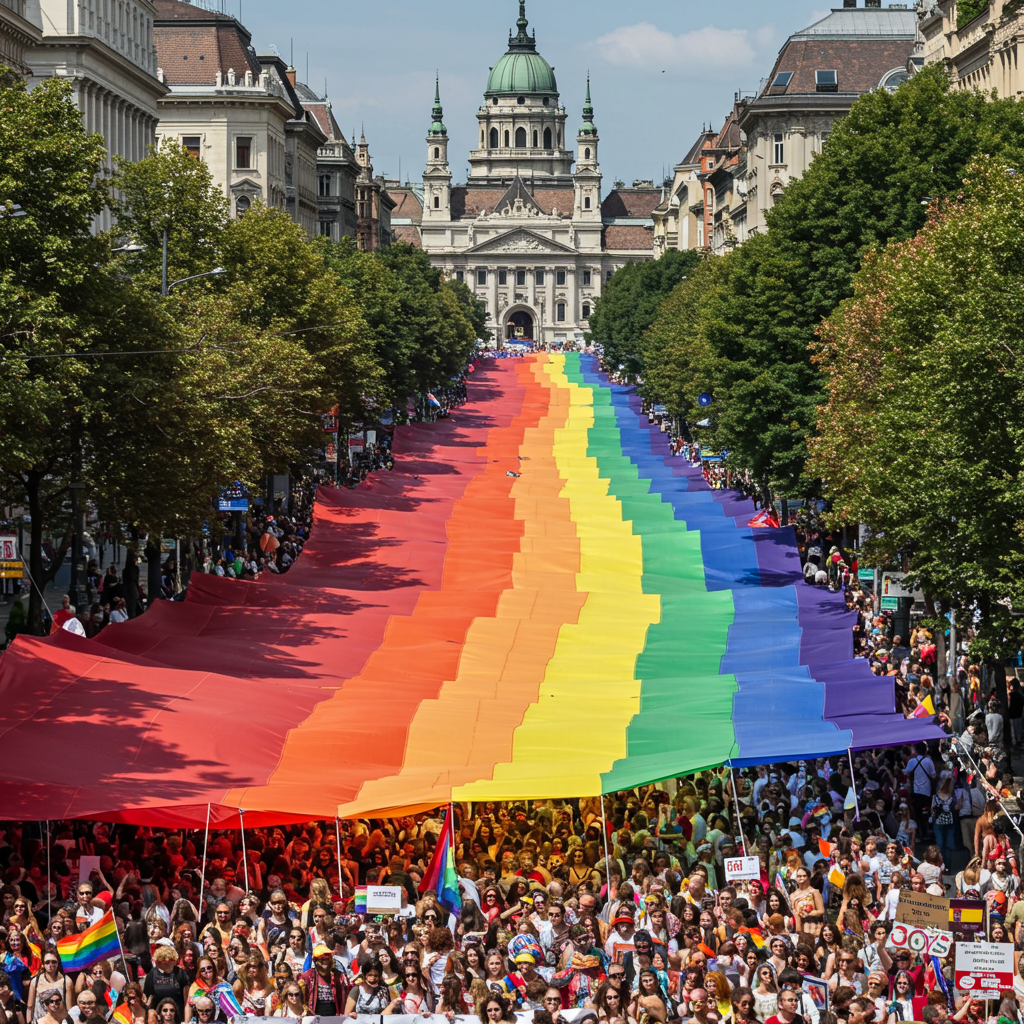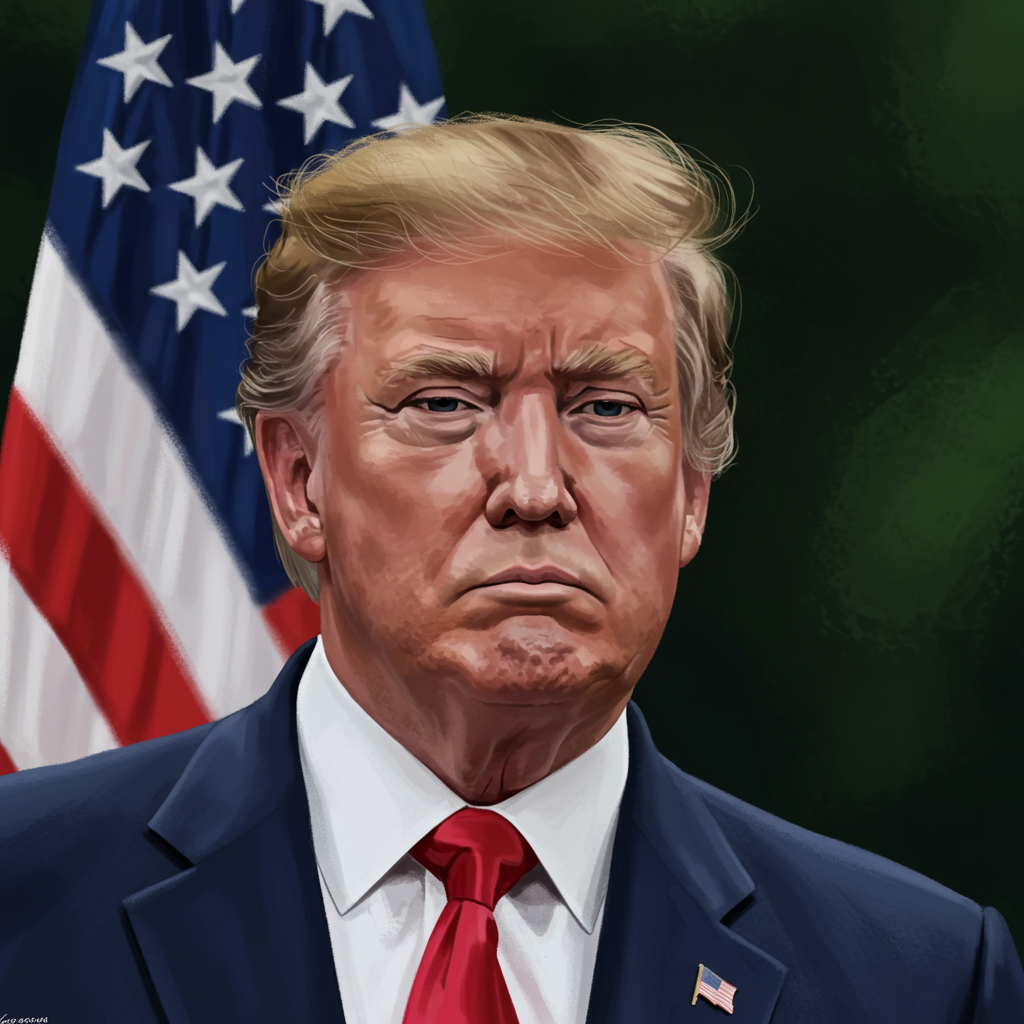Beneath a vibrant sea of rainbow flags, a momentous defiance unfolded in Hungary’s capital. On June 28, 2025, tens of thousands poured into budapest for the city’s 30th annual pride march. This wasn’t just a celebration; it was a powerful stand against a government ban on LGBTQ+ events. The massive turnout, estimated by organizers and Amnesty Hungary to be potentially the largest Pride ever in Budapest – perhaps even the biggest demonstration in Hungarian history – sent a clear message. Participants visibly reclaimed public space, marching through the city center and across the Danube River.
This demonstration occurred despite significant legal threats and police actions aimed at preventing it. Earlier in 2025, the government, led by Prime Minister Viktor Orbán’s Fidesz party, outlawed the march. This ban stemmed from specific amendments to existing laws and the constitution. These measures specifically targeted the annual Pride celebration, which the government justified by claiming they defend traditional family values and protect children.
The Ban and Its Consequences
The legal basis for the ban was rooted in new legislation passed in March 2025. This controversial law barred Pride events nationwide. It also included provisions allowing for the use of facial recognition technology to identify participants. This aspect, in particular, raised alarms among campaigners and attendees. Temporary cameras were reportedly installed along the march route the day before the event.
The government warned of “legal consequences” for those who participated. Organizers faced potential prison sentences of up to a year. Attendees risked fines of up to €500 (around $580). Prime Minister Orbán publicly supported the ban, stating it would outlaw gatherings that he claimed “violate child protection laws.” He positioned the ban within his government’s strongly Christian and conservative agenda. Despite downplaying the likelihood of physical clashes, Orbán insisted legal consequences would follow participation.
Marching in Defiance
Participants at the 30th Budapest Pride were well aware of the risks. Yet, they marched in overwhelming numbers. They carried signs that were both celebratory and defiant. Messages like “Solidarity with Budapest Pride” and “Freedom and love can’t be banned” dotted the crowd. Placards bearing crossed-out illustrations of Prime Minister Orbán were visible, directly challenging his policies. Other signs celebrated identity, such as “Transgender people are a blessing on this earth.” Many asserted their European identity and rights with banners reading “Proud. United. Equal in every corner of the EU.”
The crowd was diverse, representing all ages. Families with pushchairs walked alongside teenagers draped in capes and older residents. Activists mixed with first-time marchers. Many attendees were previously indifferent or even opposed to Pride. However, the government ban galvanized them to participate this year to defend civil liberties and the LGBTQ+ community.
Participants shared powerful reasons for attending. Eszter Rein Bodi told Reuters the event was “much more, not just about homosexuality.” She saw it as the “last moment to stand up for our rights.” Krisztina Aranyi emphasized that “the right to assembly is a basic human right.” She argued it should not be banned simply because someone disagrees with the purpose of a gathering. Luca, a 34-year-old marcher, desired a country of “diversity” and protested the law that “bans people who are different from others to gather.” She voiced concern for her young daughter’s future. Barnabás, 22, marched in solidarity. He understood the feeling of “not being seen and to be treated like an outcast,” noting the prevalence of xenophobia and homophobia in rural areas.
Political Maneuvering and Opposition
The ban and the subsequent large turnout unfolded against a complex political backdrop. Hungary has seen a steady erosion of LGBTQ+ rights since Orbán returned to power in 2010. Legal changes have banned same-sex couple adoption and prevented transgender people from changing official documents. A 2021 law prohibited the “display and promotion” of homosexuality to minors. The 2025 ban on the Pride march specifically amended this 2021 law and was further solidified by a constitutional change. Police had used these new laws to reject official registration requests for the march.
Political analysts suggested the ban was a calculated move by Orbán’s Fidesz party. It was seen as a “tried-and-tested recipe” for “polarising society” ahead of the next election. Polling indicated Fidesz had been losing ground. The move aimed to force opposition leader Peter Magyar of the TISZA party into taking a clear stance on liberal issues like LGBTQ+ rights. Magyar has focused on economic hardship, healthcare, education, and corruption. He has deliberately avoided polarizing cultural issues. While Magyar did not attend the march, citing a family holiday, he posted a message of support online. Analysts believe he successfully navigated the trap by not making Pride his central issue. This allowed Fidesz to partially regain control of the narrative by focusing on an issue where they believe they have majority support.
While the government banned Pride, police allowed far-right events to proceed. The far-right 64 Counties Youth Movement held an event on the same square as the Pride gathering. The Our Homeland Movement, a far-right parliamentary party, announced a counter-march along the planned Pride route. Both received police approval, highlighting the contrasting treatment of different groups.
International Condemnation and Support
The Hungarian government’s actions drew significant international attention and condemnation. EU chief Ursula von der Leyen called on Hungarian authorities to reverse the ban. A total of 33 countries publicly supported the march.
International figures were also present in Budapest. Officials anticipated at least 70 Members of the European Parliament (MEPs) would join the march. EU equalities commissioner Hadja Lahbib attended, calling the march a “powerful symbol of the strength of the civil society.” Dutch MEP Van Sparrentak stated her attendance was to support the Hungarian LGBTIQ+ community and show them they were not alone. She framed the situation as a broader concern: “Pride is a protest, and if Orbán can ban Budapest Pride without consequences, every pride is one election away from being banned.” Finnish MEP Li Andersson emphasized that their presence showed solidarity with civil society and the LGBTQI community, stressing the event was about fundamental rights. She argued Orbán used “family values” as a pretext to ban a march centered on equality and the right to love. Swedish climate activist Greta Thunberg also participated, calling the ban a “fascist attack on human rights.”
Hungary’s Justice Minister, Bence Tuzson, cautioned EU diplomats against participating due to the police ban. This led several EU countries to issue travel advisories warning citizens about potential fines for attending the banned event. Despite these warnings, international support remained strong.
Budapest Mayor Gergely Karacsony, a member of the opposition, played a crucial role. City Hall co-organized the march with Pride organizers. Karacsony asserted that attendees would face no reprisals because it was a municipal event. As such, he argued, it did not require police approval. Following the event, the mayor noted the large turnout. He thanked Orbán for “advertising for a more tolerant society.” Opposition leader Peter Magyar described the government’s attempt to ban the event as a “huge own goal.”
A Turning Point?
The defiance seen at Budapest Pride was more than just a reaction to a specific law. Participants viewed the march as a fight for the fundamental right to assemble. It was a broader stand against government oppression. Many saw it as crucial for the democratic future of Hungary. Marcher Blanka Molnar stated the large turnout was vital for pushing back against government policies. She emphasized it was about standing up for each other. Participant Zsofia Szeker believed the number of attendees signaled a desire for a new direction in Hungary. She felt this direction was achievable “if so many people take to the streets.”
The 30th Budapest Pride demonstrated immense resilience and determination within Hungary’s LGBTQ+ community and its allies. Despite facing legal threats, potential fines, and the shadow of facial recognition technology, tens of thousands gathered. They asserted their visibility and fundamental rights. The event served as a powerful counterpoint to the government’s policies. It drew significant international attention, highlighting the ongoing struggle for civil liberties in Hungary. The sheer scale of the protest suggests that attempts to suppress public assembly and limit rights face determined and growing opposition.
Frequently Asked Questions
What specific law did Budapest Pride defy in 2025?
Budapest Pride participants defied new legislation passed in March 2025 by the Hungarian government. This law specifically banned LGBTQ+ events like Pride marches nationwide. It amended previous legislation and the constitution. The law also controversially allowed for the use of facial recognition technology to identify attendees of prohibited gatherings.
Why did the Hungarian government ban the 2025 Budapest Pride march?
The government, led by Prime Minister Viktor Orbán, justified the ban by claiming it was necessary to protect traditional family values and safeguard children. Orbán stated the law would outlaw gatherings that “violate child protection laws.” Critics argued the ban was part of a broader crackdown on the LGBTQ+ community and a political tactic to polarize society.
How did the large turnout at Budapest Pride impact the situation?
The record turnout, potentially reaching 200,000 people, significantly underscored public opposition to the government’s ban. It demonstrated the strength and determination of civil society in Hungary. Despite threats of fines and legal action, the sheer number of participants made enforcing the ban impractical. The event garnered widespread international attention, highlighting the situation in Hungary and drawing support from numerous countries and EU officials. Budapest Mayor Gergely Karacsony also noted the large turnout, suggesting it sent a clear message.



